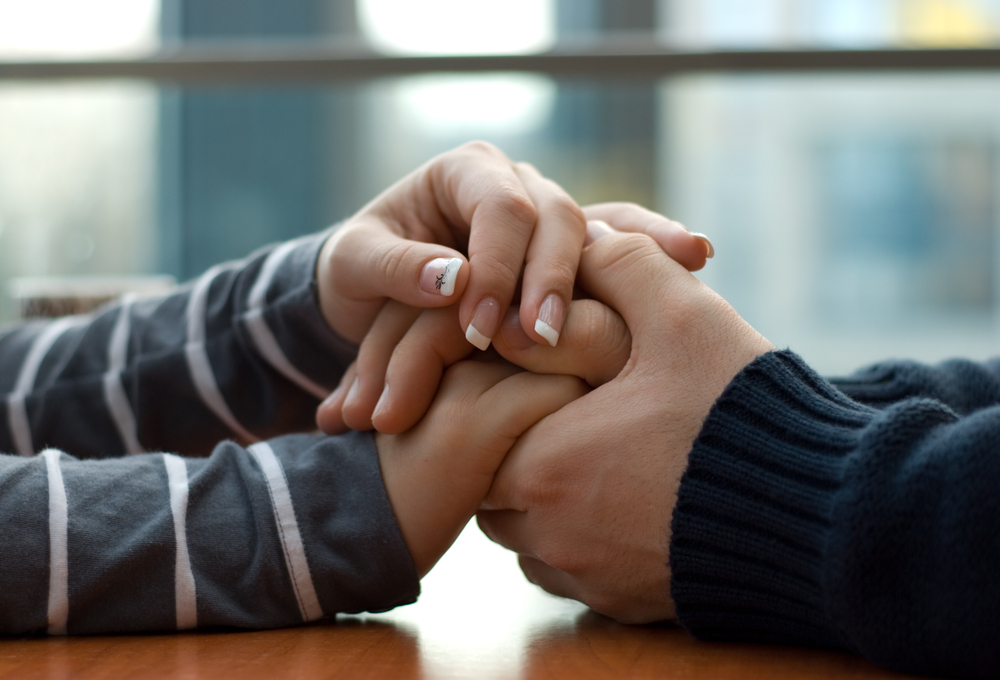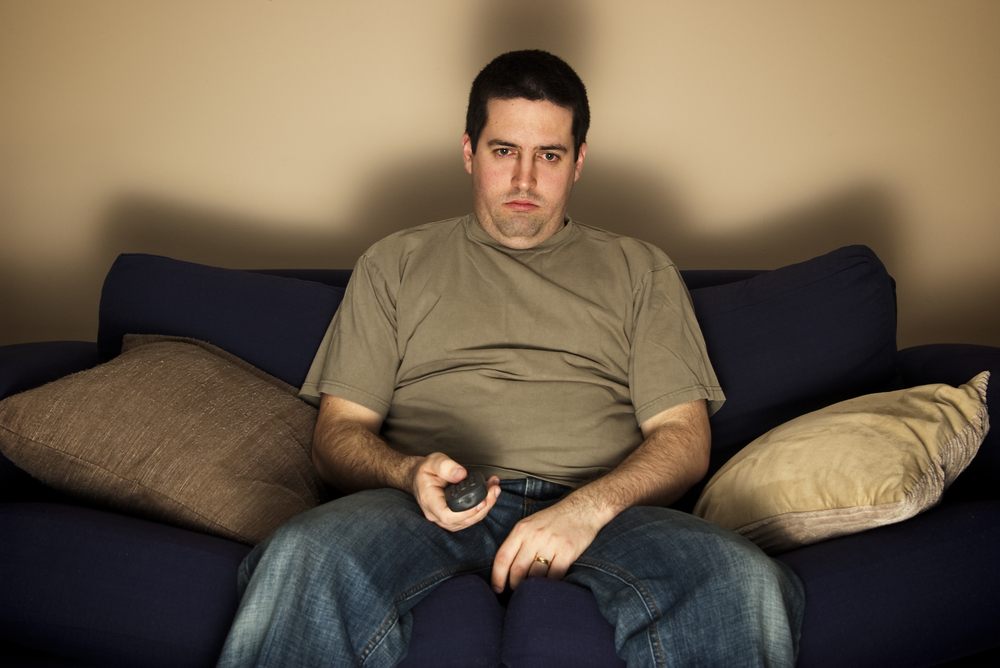
By John McGowan, Canterbury Christ Church University
Suicides among mental health patients under home treatment are double the number of suicides in inpatient units, according to a new study published in The Lancet Psychiatry which looks at suicide rates in different mental health settings (Hunt et al, 2014).
The authors compared suicide rates in traditional acute mental health wards in England to the more recently established Crisis Resolution and Home Treatment teams, or CRHTs. These were set up in the early 2000s to provide an alternative to hospital – but it seems, they may not be doing the job of care as well as the wards.
At first glance (and if you don’t go beyond the press release) this looks like another round in a long-running conversation about the benefits of community vs hospital care (Thornicroft and Tansella, 2004). Is the former simply a money-saving gambit when we are too cash-strapped to provide proper care?
As someone who has spent a good portion of my working life in mental health wards, I’d like to think this is a simplistic view. People sometimes need hospital, but while there are some good initiatives about, there are also downsides to inpatient care such as dislocation, a potentially frightening environment and the stigma of the “loony bin”. There is a good case made for staying in familiar surroundings and close to loved ones during what may be the greatest crisis of your life.

Suicide rates remain high for people under the care of CRHT teams, compared with the inpatient setting
Nuance in interpretation
The suicide statistics (14·6 per 10,000 episodes in CRHTs compared to 8·8 per 10,000 in hospital) are awkward for advocates of more community-based care. But while it could merit a rethink about the relative merits of hospital, perhaps the lessons from The Lancet Psychiatry paper are more nuanced.
It’s worth noting that overall suicide rates across these “acute” mental health settings declined slightly over the period studied (between 2003 and 2011). It could be that the number of people who kill themselves while an inpatient is relatively stable and the problem has simply been transferred from one setting to another one. It may also be that hospital may be quite good at preventing suicide while people are in-patients via a relatively controlled environment (greater observation, restricted access to ligature points and knives and so on) and people may leave hospital then kill themselves. This raises the question of what hospitals can do beyond simply controlling risk for the period of the stay.

In a third of patients (n=428) under the care of CRHT teams, suicide happened within 3 months of discharge from psychiatric inpatient care
Single measures
I also wonder, and I’m aware this is moving on to thinner ice, how appropriate is it to judge the success of services on the single measure of the suicide rate (I would stress the study authors don’t do this). I’ve argued elsewhere that simply putting resources into preventing suicidal behaviour may cut people off from their own resources for recovery. You become responsible for their safety and they lose touch with how to manage their own difficulties. Concentrating only on the cases where someone dies, ignores many other potentially good outcomes of a strategy where suicide prevention is a goal, but not the only one.
Interestingly, the study found that a high proportion (30%) of the people who killed themselves while under care of CRHTs were quite isolated (living alone, for example). Rather than an example of CRHTs being a bad option, this might be reflective of care decisions made inappropriately. Sending people out of hospital without support around them is irresponsible – it’s a no-brainer isn’t it?
Of course this is also with the benefit of hindsight. No one is looking at the other occasions where people were sent out of hospital and did not die. Keeping people in hospital simply because they don’t have much support outside, doesn’t seem like a realistic solution.
Health professionals do not have a crystal ball and cannot predict risk even close to perfectly. Perhaps they shouldn’t try. If you can’t take even “positive” risks (ones where there is a potential gain in terms of managing your own distress despite the dangers), then mental health services might as well pack up and go home. The reality is that there will always be suicides in mental health services. While there is always room for improvement, the risks remain high. Rather than lamenting the absence of a crystal ball, I sometimes find myself yearning for a magic wand.

Crisis resolution home treatment may not be appropriate for some vulnerable people who live alone or have adverse life circumstances
If you need help
If you need help and support now and you live in the UK or the Republic of Ireland, please call the Samaritans on 116 123.
If you live elsewhere, we recommend finding a local Crisis Centre on the IASP website.
We also highly recommend that you visit the Connecting with People: Staying Safe resource.![]()
Links
Hunt IM, Rahman MS, While D, Windfuhr K, Shaw J, Appleby L, Kapur N. Safety of patients under the care of crisis resolution home treatment services in England: a retrospective analysis of suicide trends from 2003 to 2011. The Lancet Psychiatry – 1 July 2014 ( Vol. 1, Issue 2, Pages 135-141 ) DOI: 10.1016/S2215-0366(14)70250-0 [Abstract]
Thornicroft G, Tansella M. Components of a modern mental health service: a pragmatic balance of community and hospital care: overview of systematic evidence. Br J Psychiatry. 2004 Oct;185:283-90.
John McGowan does not work for, consult to, own shares in or receive funding from any company or organisation that would benefit from this article, and has no relevant affiliations.
This article was originally published on The Conversation.
Read the original article.


RT @Mental_Elf: Fewer patients kill themselves in mental health units, but there are bigger benefits to home care http://t.co/DrXBKFGRhO
Fewer patients kill themselves in mental health units, but there are bigger benefits to home care: Suicides am… http://t.co/vfNmevs05A
@Mental_Elf @gordonmilson Home Intervetntion Teams in my area seem pretty rubbish actually; very few appointments, and often don’t turn up.
We have a debut blog today on Crisis Resolution & Home Treatment from John McGowan @CCCUAppPsy http://t.co/fIfaVJmAqQ
Suicide&MH blog. A ship in the harbour is safe, but that’s not what ships were made for… @Mental_Elf @CCCUAppPsy http://t.co/CdBND8yHz3
@ciacox @Mental_Elf I’d just like to extra, extra favourite that one but can’t find a suitable button.
@CCCUAppPsy @Mental_Elf A supervisor on a secure unit I worked on had that quote on her wall. It’s stayed with me.
@ciacox @Mental_Elf Is one I would like to offer to @ProfLAppleby. Discussed simpler point re positive risk the other day. Less poetically.
Tx to colleagues at @ConversationUK who have contributed a guest post today on suicide, CRHT & inpatient wards http://t.co/DrXBKFGRhO
“People sometimes need hospital, but …a good case made for staying (at home)“ @Mental_Elf: @ConversationUK #Suicide http://t.co/U0VGl3ti2T
Jackie Mcdonald liked this on Facebook.
Lisa Eden liked this on Facebook.
Carina Kirby liked this on Facebook.
Mental Elf: Fewer patients kill themselves in mental health units, but there are bigger benefits to home care http://t.co/pBoPgc596M
Crisis resolution home treatment may not be suitable for some ppl who live alone or have adverse life circumstances http://t.co/fIfaVJmAqQ
A very warm welcome to the woodland to John McGowan @CCCUAppPsy http://t.co/fIfaVJmAqQ
@Mental_Elf Happy to be there.
Abi Johnson liked this on Facebook.
The Mental Elf liked this on Facebook.
RT @Mental_Elf: A retrospective analysis of safety of patients under care of crisis resolution home treatment services in England http://t.…
“Fewer patients kill themselves in mental health units, but there are bigger benefits to home care” http://t.co/skyCRv0dLh
Suicide rates in acute mental health inpatient units vs crisis resolution home treatment http://t.co/fIfaVJmAqQ
Don’t miss: Fewer patients kill themselves in mental health units, but there are bigger benefits to home care http://t.co/fIfaVJmAqQ
@Mental_Elf but you’ve got to discharge yr patients sometime! It’s all about the care plan& the therapeutic alliance.
My début on @Mental_Elf. CRHTs, wards, suicide and positive risks. http://t.co/cu0GrpU4l1 http://t.co/81yBxCR7EO
@CCCUAppPsy @Mental_Elf
This is a good article – to be honest, you’re never going to decrease the risk of serious self harm in community.
@CCCUAppPsy @Mental_Elf
CRHT visits people in their home 2/3 a day max for upto an hour per session – we literally cannot watch someone >
@CCCUAppPsy @Mental_Elf < 24/7. We’re not the ward.
What we can do better is identify the risk, look for relapse indicators and act >
.@JazzTehara @Mental_Elf This is tricky. I’d argue not exactly our job to always contain risk. Point expanded in http://t.co/htN3Xt3Kxy
@CCCUAppPsy @JazzTehara @Mental_Elf I wld say we suppt ppl to #selfmanage risk
@JaneStreetPPAD @CCCUAppPsy @Mental_Elf
Yes, this is probably the best way of putting it.
@JaneStreetPPAD @JazzTehara @Mental_Elf Broadly.I think you have to be really clear on rationale though. that’s what that slideshow about.
@CCCUAppPsy @JaneStreetPPAD @Mental_Elf
Great slideshow btw. A lot of key points are shared with @Living_Works practical classes on >
@CCCUAppPsy @JazzTehara @Mental_Elf Absolutely, great slideshow. Will be sharing this with our risk training team
@CCCUAppPsy @Mental_Elf
It’s not. We’re not there there to contain risk. However, it down to us to recognise risk indicators.
@CCCUAppPsy @Mental_Elf < accordingly.
But often we find our hands are tied because as soon as someone is discharged, their bed is taken.
@JazzTehara @Mental_Elf This is not always a bad thing. There are plenty of ups to being out of hospital.
@CCCUAppPsy @JazzTehara @Mental_Elf Psych Hospitals traumatising for most. More advantages for profs rather than patients.
@CCCUAppPsy @Mental_Elf < pressure on beds is relentless at the moment and it’s getting worse as beds are getting closed everywhere.
@JazzTehara @CCCUAppPsy @Mental_Elf Where isthat happening, certainly not in Cornwall! ppl are lucky 2 get a phone call let alone a visit!!
@sandycann2 @CCCUAppPsy @Mental_Elf
The CRHT I am part of. We work our butts off!
@JazzTehara @CCCUAppPsy @Mental_Elf Maybe you do, not necessarily a reflection ofwhat happening throughout country, many ppl abysmal care!
@CCCUAppPsy @Mental_Elf
I can understand that – but as a reply I can only give the answer of the experience I have.
@JazzTehara @Mental_Elf Think you are missing my point slightly. Beds necessary sure but hospital not always the best option. Even when risk
@CCCUAppPsy @Mental_Elf Great blog! Welcome to the woodland!
@121Therapy @Mental_Elf Many thanks.
Fewer patients kill themselves in #mentalhealth units, but there are bigger benefits to home care http://t.co/d3H5TJoPNI via @Mental_Elf
Our own @CCCUAppPsy John McGowan on the dangers of myopic, paternalistic services over-focused on containing risk:
http://t.co/AnekEyXOUH
Fewer patients kill themselves in mental health units, but there are bigger benefits to home care http://t.co/NohdzEMhPq via @Mental_Elf
To @rcpsych Suicide risk a very limiting criteria for service quality. Ignores downs of hosp and ups of discharge. http://t.co/tbbaMYSi9J
.@AnneCooke14 @rcpsych Suicide risk a limiting lens for quality. Ignores downs of hosp and ups of discharge. http://t.co/tbbaMYSi9J …
RT @Mental_Elf: Suicide rates remain high for people under the care of CRHT teams, compared with the inpatient setting http://t.co/fIfaVJmA…
#Suicide in Inpatient Units vs Crisis Resolution Home Treatment – The Mental Elf http://t.co/9pIbvQXMsn
Interesting @Mental_Elf comments on findings that suicide rates are higher in crisis teams than hospital care: http://t.co/Pqa2IvbN1e
.@TheRetreatYork We won’t get away from targets. Perhaps a job to be done to make them more nuanced and meaningful? http://t.co/tbbaMYSi9J
Interesting blog post, whilst I can absolutely see the benefits of being treated in ones home environment I also know that if I had been treated at home without 24 hour nursing care I would be dead right now.
I have recently qualified as a mental health nurse and have noticed that as beds have been closed due to significant reductions in budgets the ward environment is not the therapeutic safe haven it was once able to be as rather than a mix of diagnosis 90% of patients are now acutely psychotic and the ward can often be a loud place to be. I wonder what will now happen to those who are quietly but quite suicidally depressed? Wards have changed from four years ago when I was last a very depressed inpatient having ECT and needing support from staff.
Will this be one of the reasons for increased suicide figues? maybe but I will be interested to read the 2012/2013/2014 figures when released.
Claire
http://thestrongestsmile.wordpress.com/
Abi Johnson liked this on Facebook.
The Mental Elf liked this on Facebook.
Jackie Mcdonald liked this on Facebook.
Lisa Eden liked this on Facebook.
Carina Kirby liked this on Facebook.
Ailsa Rayner liked this on Facebook.
[…] with providing crisis care. Suicide rates in Crisis Teams appear to be rising, but as a recent Mental Elf blog by John McGowan suggests this is only part of the picture. To remain unclear about effective models of crisis […]